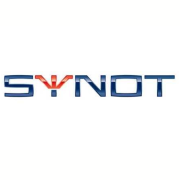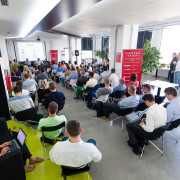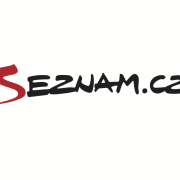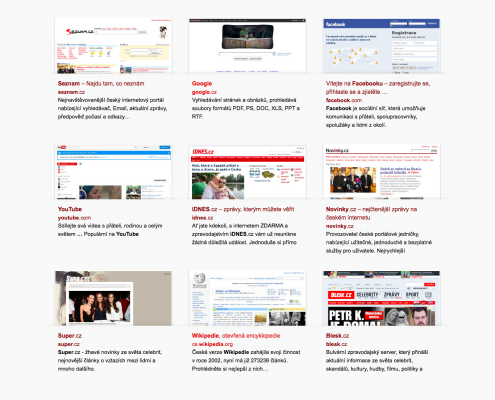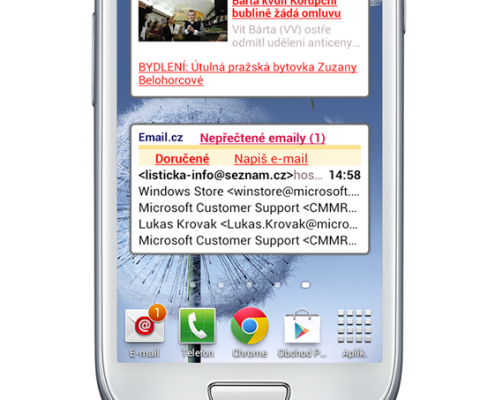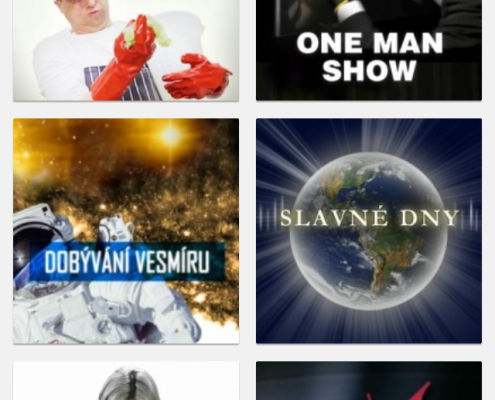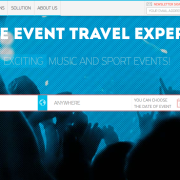This weekend, we received word that Travelatus, one of our Alumni of StartupYard 2013, was acquired by Munich-based Excursiopedia. I caught up with Co-Founder Valentin Dombrovsky for an interview on the deal, and his experiences with SY.
We’re excited to hear that your startup, Travelatus, has been acquired by Munich based Excursopedia. How did the acquisition come about?
Thank you Lloyd. Well, Excursiopedia and Travelatus have been following each other for a long time – it turned out that both our companies have some weight with the Russian online travel market, and we were doing some similar things. We were talking about opportunities for partnership and then it turned out it would be easier for us all to unite and to try to conquer the tours and activities market together.
We’ve known each other for quite a long time thanks to our Travel Startups group in Facebook. At Travelatus we thought about expanding our inventory; giving travellers opportunities to order more services in partnership with Excursiopedia. And we got acquainted with Excursiopedia CEO Kirill Sermyagin in person during the DEMO Europe conference, where both our projects were presented.
I hope that in one year Excursiopedia will be widely known world-wide – both among travellers and among online travel entrepreneurs. And our goal is to help it grow. I truly believe that we have skills to build a billion dollar company in 5 years time and that’s what our team is going to help in doing.

Tell us about your team. How did you meet each other, and how did you come up with the idea for Travelatus?
My cofounders Denis and Vitaliy both come from the small town of Balakovo, but they met each other randomly in Moscow in 2007. They both worked as developers, and one day decided to launch a startup devoted to sports – it was called Spogler. In February 2010 they attended Startup Weekend in Moscow, in which I participated as one of the experts helping startups on internet marketing issues (I was CEO of internet marketing consulting company Nextup Media then). It turned out that we liked each other and I became an advisor for their startup Spogler. Shortly after the SW guys left their jobs and devoted their efforts to building their project (with a bit of my help), and running their outsourced web-development company SevenQuark. But we didn’t manage to get far with Spogler and eventually stopped working on it. However, we were still in touch and worked together on some outsource development.

In October 2011 I left Nextup Media (sold my share to my partner) and began to search for something to work on. Eventually I came to the idea of Travelatus as something that was called “An Amazon for Travel” (we got the pitch with the initial idea here). So I turned to the guys to help me with the development and we became co-founders. I also joined SevenQuark as CMO to help them get clients to have something to live on. So in fact, the work on the project started part-time in the beginning of 2012. We tried to work on the back-end, exploring thoroughly the process of integration with Expedia API and that took quite a lot of time and effort (considering again that we had to work on clients’ projects as well). In November 2012 we turned to the new idea of focusing on event travel.
See more info on Travelatus here
How did you find StartupYard in 2013, and how did being part of an accelerator affect your company’s trajectory in the past 8 months?
I strongly believed that an accelerator was the right choice for our company. We didn’t think of StartupYard as of the only opportunity for us, but we applied to it at the right time, I think. This was exactly the time when the project began to be something more than an idea and got its 1st prototype (it was very different from what we have at the moment but still). And StartupYard was not the only accelerator to accept us, but again they were the 1st and did it at the right time. And I’m glad that it turned out this way.
Joining StartupYard had a great impact on our project. We got valuable advice, and living in Prague itself was mind-blowing experience. We didn’t manage to raise funding after the accelerator programme as we’d planned, but nevertheless the whole 3-month trip was great.
[SY Mentors] Ondrej Bartos and Damian Brhel influenced us most of all, I think. During talks with Ondrej the new UX-concept of Travelatus was born in fact, and Damian helped to look at the service from the point of view of a professional who is really interested in what we’re doing and looks forward to using our service.
I’m a big Prague fan as well. What about the city made your experience special?
You had a great blog post about “hacking Prague life” – some of the things that I liked about the city were mentioned there. When we speak about Prague, it’s hard for me to tell about something special – the whole city is very different from what we have in Moscow and I can’t even tell what I liked more: the central historical part of the city or Jinonice, Nove Butovice or parts around Smichovske Nadrazi. It may sound strange, but parts of the city that are not so “touristy” make you feel the real atmosphere of the city – feel that you’re part of it too.
Besides general atmosphere, it’s great to feel yourself as part of a European startup community. We have big and active startup community in Russia. However, I feel that it is a bit “closed;” too few foreigners visit Russia and we don’t have as many opportunities to visit European countries as Czech people do.
What would you say has been most responsible for your company’s growth in this short period?
I should say that we made some mistakes in regards to gaining traction for our project. As always, we thought that getting customers would be easier than in turned out to be. And getting customers was vital to getting further investments. So these mistakes did cost us a lot (as they do for many startups). Everything else was fine- the media liked us, our design and UX were called “wonderful.” But we didn’t have customers, so that all was a bit useless.
That’s such a common story. What would you do differently today to bring customers on board earlier?
When I talked with different online travel entrepreneurs (for example, with Diego Saez-Gill of Wehostels), they told me that it would have been better to start not with the service “for everyone who likes traveling to events,” but with some focus. For example, a service for people who like to travel to see events in London, or for people who are rock fans and like to travel to rock concerts. One of our competitors – Festicket – started with kind of a small niche, and rather small range of events, but then managed to grow into quite a large service offering more than 100 of festivals to travel to. I didn’t like their approach when I first saw it, but now I know that they did it right.
And that was the kind of pivot that we were thinking about before starting talks with Excursiopedia.
So it sounds like this acquisition was not your original goal.
No, we didn’t have this as a goal. […] But then Excursiopedia offer came in and, I think, it was the right time for us to accept it in order to join a growing company (whose team, by the way, was named in top-10 among Russian startups according to rating made by Pruffi HR-agency).
One of the goals in joining an accelerator is usually to prepare for and court investors. What about your approach, or the accelerator made this goal tough for your team? What could SY do better?
I think that SY needs to work more on attracting investors from outside of Czech Republic, and making them interested in what teams in the accelerator are doing. Same for mentors, too.
The Czech market is small, and Czech investors are a bit too cautious.
I think that investor sessions should be held while teams are still in the accelerator – investors then can give their feedback and at least start following some teams. This will help them to understand their potential on Demo Day, as they’ll see what was done during the 3 months of acceleration. I don’t want to boast, but I think that we did a huge amount of work! But it wasn’t too much appreciated, as people didn’t know that it in fact took us 3 months to reinvent the UX-concept and to build the service practically from scratch.
It’s very important for startups to build their reputations in the professional community, and that it may be the way to find investments or even exits. We didn’t plan to make an exit so early, and in fact I’ll call this exit “an enter.” We’re entering Excursiopedia to help it grow into a great company. And our reputation in the online travel sphere helped us to do it (and will help us further on, of course).
We hear that this acquisition is more than a buy-out. It sounds more like a partnership. You’re becoming part of the Excursopedia team, and even moving to Munich. What do you think Excursopedia saw in your team and your service that they liked so much?
Firstly, we’ve got experience in this market that is a bit different from “activities,” which are presented at Excursiopedia at the moment. The 2nd thing was experience that is not correlated with the event tickets product itself. I have experience in building relations in the online travel and startup community, both in Russia and abroad, and this is very valuable for Excursiopedia, as it plans to expand its presence in the domestic and international market. Denis and Vitaliy are experienced developers. I should even say that they’re not just developers, but great technical teams leaders, and they’ll have the opportunity to use their skills at Excursiopedia as well (unfortunately, they didn’t have such opportunities in Travelatus).
And finally Excursiopedia is interested in developing the Travelatus project as part of the company. They like our idea of event travel and travelling with some goal in general. That’s why they’re interested in helping us to bring our service to the new level.
Would you recommend this (launching a startup) as a strategy for seeking employment? It must have been a lot of stress
I definitely won’t! And we were not seeking the job. It just happened that Excursiopedia got right positions for us and managed to offer them at the right time.
Money is not a subject a lot of founders are as comfortable with as they’d like to be. Any advice for others in the same situation?
Well, my position is that you should seek opportunities – not money – when you build your first project. We gave up 10 % of our project to SY without thinking that it was a bad deal, for example – because we gained a lot of opportunities. The main thing is that you should think about yourself as one big “startup” – even if your project fails or you manage to make not so much money out of it. You gain experience and connections which are much more valuable. So if you see investment or selling a company as a good deal in those terms, then you should not hesitate.
What was the most valuable thing you learned at StartupYard? Something you’d want future groups to get out of an accelerator.
I see things have changed [at StartupYard}. You got a new CEO and are focusing on a smaller niche, and I think that it’s the right thing to do. So I think later groups will get even more value from the accelerator than we did.
The things that you should think of when you get into an accelerator with your project is how you will approach customers once the project is done. At StartupYard they teach lean startup concepts, but I think that it’s better to get into them before you apply, to find ways to make your application to stand out. If you write “We had talks with 100 prospective customers and 50 are ready to buy our product once it’s done”, it will certainly make you stand out, for example. For us, the most valuable things were the mistakes that we didn’t manage to avoid, but we understood their reasons and we managed to learn from them, thanks to what we learned at StartupYard.
[ssba]

